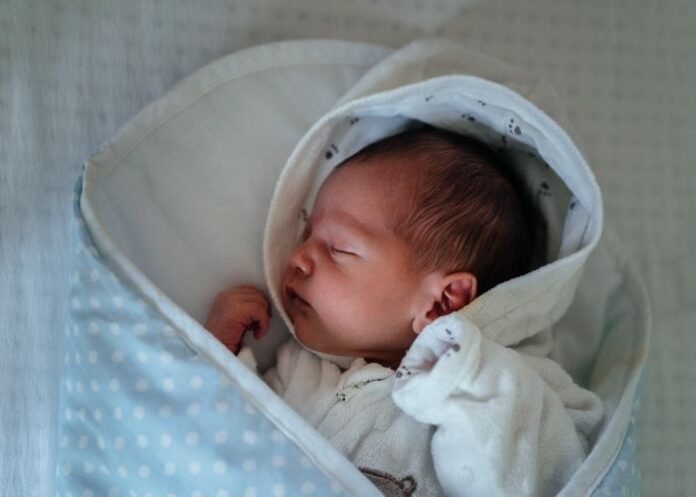Genetics may play a role in sudden infant death syndrome, or SIDS, according to a recent study which suggests that if one child in the family has died of the condition, siblings have a heightened risk of suffering the same tragic fate.
Over the course of 39 years, the Copenhagen University Hospital-led team found siblings of infants who died of SIDS had a four-fold higher risk of dying suddenly, compared with the general population, according to the report published in JAMA Network Open.
The large study reinforces previous research that shows SIDS may be more of a medical problem than previously thought, said Dr Richard Goldstein, director of the Robert’s Programme on Sudden Unexpected Death in Paediatrics at Boston Children’s Hospital.
“The general bias is that this is a sleep accident and the challenge for people looking at the science here is to advocate on behalf of the families and look harder,” he told MedicalXpress.
Other findings from the SIDS study
The study identified 2 384 siblings of 1 540 infants who died from SIDS among 2.6m births in Denmark between January 1978 and December 2016. Researchers found:
• After one year, eight siblings died of SIDS at a median age of 2.5 months.
• Most cases of SIDS occurred within the first six months of life.
• Boys represented 61% of the SIDS cases.
• Siblings of infants who died from SIDS were more likely to live in households with low income.
• They were also more likely to have mothers with only an elementary school education compared with the general population.
The Denmark study isn’t the first to find a genetic association with SIDS. However, some experts argue not enough funding has supported research into the topic as providers rely on safe sleeping techniques to prevent SIDS.
In the 1990s, public health officials began promoting the “Back to Sleep” initiative – now called Safe to Sleep – to teach caretakers about reducing the risk of SIDS by putting infants to sleep on their backs.
While US Centres for Disease Control and Prevention (CDC) data shows rates have declined, a study found non-SIDS post-neonatal mortality has followed a similar trajectory, suggesting other factors may be at play.
And about one-third of SIDS cases still occur in babies who were sleeping on their backs, Goldstein said.
Health experts say new evidence continues to reinforce genetics may play a role in SIDS and it’s important to invest in more research as data shows SIDS is apparently the 12th most underfunded paediatric condition by the National Institutes of Health.
Study details
Risk of Sudden Infant Death Syndrome Among Siblings of Children Who Died of Sudden Infant Death Syndrome in Denmark
Charlotte Glinge, Sára Rossetti, Louise Bruun Oestergaard, et al
Published in JAMA Network Open on 25 January 2023
Key Points
Question
Is a family history of sudden infant death syndrome (SIDS) associated with increased risk of subsequent SIDS compared with the general population?
Findings
In this cohort study of more than 2.6m consecutive births in Denmark between 1978 and 2016, a total of 1540 infants died of SIDS. A higher rate of SIDS was observed among siblings of children who died of SIDS compared with the general population.
Meaning
These findings suggest that any sibling of a child who died of SIDS should be investigated with great care to exclude genetic and environmental factors.
Abstract
Importance
Sudden infant death syndrome (SIDS) remains a leading cause of death during the first year of life. The etiology of SIDS is complex and remains largely unknown.
Objective
To evaluate whether siblings of children who died of SIDS have a higher risk of SIDS compared with the general paediatric population.
Design, Setting, and Participants
This register-based cohort study used Danish nationwide registers. Participants were all infants (<1 year) in Denmark between 1 January 1978, and 31 December 2016, including siblings of children who died of SIDS. Siblings were followed up from the index cases’ date of SIDS, date of birth, or immigration, whichever came first, and until age 1 year, emigration, developing SIDS, death, or study end. The median (IQR) follow-up was 1 (1-1) year. Data analysis was conducted from January 2017 to October 2022.
Main Outcomes and Measures
Standardised incidence ratios (SIRs) of SIDS were calculated with Poisson regression models relative to the general population.
Results
In a population of 2 666 834 consecutive births (1 395 199 [52%] male), 1540 infants died of SIDS (median [IQR] age at SIDS, 3 [2-4] months) during a 39-year study period. A total of 2 384 younger siblings (cases) to index cases (first sibling with SIDS) were identified. A higher rate of SIDS was observed among siblings compared with the general population, with SIRs of 4.27 (95% CI, 2.13-8.53) after adjustment for sex, age, and calendar year and of 3.50 (95% CI, 1.75-7.01) after further adjustment for mother’s age (<29 years vs ≥29 years) and education (high school vs after high school).
Conclusions and Relevance
In this nationwide study, having a sibling who died of SIDS was associated with a four-fold higher risk of SIDS compared with the general population. Shared genetic and/or environmental factors may contribute to the observed clustering of SIDS. The family history of SIDS should be considered when assessing SIDS risk in clinical settings. A multidisciplinary genetic evaluation of families with SIDS could provide additional evidence.
See more from MedicalBrief archives:
Siblings of SIDS infants at 10-fold risk of same death
Combined prenatal smoking and drinking greatly increases SIDS risk — NIH study
Message on SIDS not getting through
Just a cigarette a day in pregnancy doubles Sudden Infant Death risk

